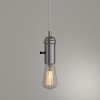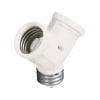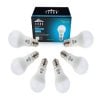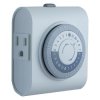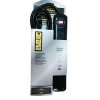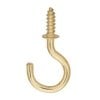GoEasy
Member
Reading through all the advice on how to grow cannabis can make it seem like a daunting task.
As you know the list is endless. Where does one begin? Contrary to what you might think, once you have a little experience growing cannabis indoors it can be extraordinarily easy. Just put a seed in soil, add water and light, wait a few months, and voila! It’s ready!
Well, OK. There might be a bit more to it than that, but I promise you it can be simple.
Learn to walk before you try to run a marathon.
This guide is to help you test if growing indoors is something you will want to continue to do. The goal is to make it to harvest without setbacks, on a budget, and without permanent changes to the home. At the end of the test run, you should have enough experience to know if you want to continue growing and an idea of what method(s) you’ll use going forward. You'll have a decent harvest and should break even with just the first grow.
What this guide purposely tries to avoid:
Important considerations:
The first thing you’ll need to do is decide if personal growing is even for you. Start by considering your privacy and security. At any time over the next 6 months, will you need to prevent someone from having access to your plant(s)? Will you want to keep your activity secret from any unannounced guests (parents, co-workers, neighbors)? A spare room with a lockable door may work, but perhaps not. After all, a locked room will arouse suspicion. Also keep in mind that towards the end of this process you will have a strong pot odor throughout the house all day long, and you won’t be able to hide it very well (if at all).
Lighting is another concern. When the lights are on, they will be bright. Even though the grow space is closed off, while in the same room you won’t be able to ignore it. They may also be on for many hours a day, often times while you are trying to sleep. The opposite is also true. There will be times during the day that you won’t be able use the room because it needs to remain pretty dark.
What about upkeep and maintenance? Will a trip/vacation lasting a week or more prevent you from attending to the plants? Do you have easy access to an electrical outlet? Easy access to water is also a must. For the next 6 months you’ll be hand watering at least a couple of time a week, and at the end possibly as often as every day. One last consideration is that you’ll almost certainly want at least 5 feet of headroom for the plants to grow.
All of these conditions can usually be met by using a closet in a spare room. As an example, for the past 20 years I’ve used the closet in my exercise room. I still get to use the room every day, and only need to worry about a 12 hour daily blackout period during the flowering cycle (which I schedule around my exercise routine).
What should you grow?
You’ll need to decide if you want to start with seeds or clones. If you live in a place where cannabis use is legal (or have friends who grow), you may be able to obtain clones. Clones have some strong advantages over seeds. You get to bypass the sprouting phase which can be challenging for the new grower. They also have a head start in growth, which can easily save you weeks of grow time. You’ll also know the exact characteristics of the plant.
Seeds also have advantages of their own. First, there are more seed options than clones and you may be able to find some with characteristics that better suit your needs. You also don’t have to worry about bringing bugs into your room (we’ll get into the importance of a bug free environment later in this guide). At this point, don’t attempt to grow seeds you find in your buds (bag seed). Since this is your first grow, you don’t want to have to worry about genetics. If you use bag seed and the plant has problems, you likely won’t really know why.
Here’s my suggestion for the first-time grower starting from seed: go to Nirvanashop and get their feminized Northern Light and an AutoFem selection of your choice. Northern Light is a tried-and-true strain that produces well, stays compact, and has very few problems. Today’s auto-flowering strains are quite respectable and very, very easy to grow. It's possible to grow both of these at the same time and in the same grow room. Just focus on the requirements for the Northern Light and let the auto do its thing. Seriously, leave it alone.
Your heart may race the first time you purchase from a seedbank. But it’s commonplace, hundreds of people do it each day, and no one in the U.S. gets in trouble anymore. Really. Just use your real name, your own credit card, have it delivered to your real address, and use the stealthiest option available (such as being removed from the original breeder packs). There is a very small chance that customs will find the seeds. The worst that will happen is they keep the seeds, add a letter to your package saying so, and then send it on its way to you. I’ve had a few of my deliveries intercepted over the years and never once have had a problem. They really couldn’t care less about seeds (especially in today’s environment). If the seeds are confiscated, just contact the seedbank to let them know what happened and they’ll quickly seed your replacements.
• Soil, hydroponics, aeroponics
• MH, HPS, LED, CFL
• Complex nutrient schedules and testing
• Plant problems
• Topping, sea of green, low stress training
• Ventilation for heat and odor removal
• MH, HPS, LED, CFL
• Complex nutrient schedules and testing
• Plant problems
• Topping, sea of green, low stress training
• Ventilation for heat and odor removal
As you know the list is endless. Where does one begin? Contrary to what you might think, once you have a little experience growing cannabis indoors it can be extraordinarily easy. Just put a seed in soil, add water and light, wait a few months, and voila! It’s ready!
Well, OK. There might be a bit more to it than that, but I promise you it can be simple.
Learn to walk before you try to run a marathon.
This guide is to help you test if growing indoors is something you will want to continue to do. The goal is to make it to harvest without setbacks, on a budget, and without permanent changes to the home. At the end of the test run, you should have enough experience to know if you want to continue growing and an idea of what method(s) you’ll use going forward. You'll have a decent harvest and should break even with just the first grow.
What this guide purposely tries to avoid:
• Advanced growing techniques
• Maximizing yields or growing many plants
• Learning new technology
• DIY or permanent modifications to the house/room
• Expensive investments
• Maximizing yields or growing many plants
• Learning new technology
• DIY or permanent modifications to the house/room
• Expensive investments
Important considerations:
The first thing you’ll need to do is decide if personal growing is even for you. Start by considering your privacy and security. At any time over the next 6 months, will you need to prevent someone from having access to your plant(s)? Will you want to keep your activity secret from any unannounced guests (parents, co-workers, neighbors)? A spare room with a lockable door may work, but perhaps not. After all, a locked room will arouse suspicion. Also keep in mind that towards the end of this process you will have a strong pot odor throughout the house all day long, and you won’t be able to hide it very well (if at all).
Lighting is another concern. When the lights are on, they will be bright. Even though the grow space is closed off, while in the same room you won’t be able to ignore it. They may also be on for many hours a day, often times while you are trying to sleep. The opposite is also true. There will be times during the day that you won’t be able use the room because it needs to remain pretty dark.
What about upkeep and maintenance? Will a trip/vacation lasting a week or more prevent you from attending to the plants? Do you have easy access to an electrical outlet? Easy access to water is also a must. For the next 6 months you’ll be hand watering at least a couple of time a week, and at the end possibly as often as every day. One last consideration is that you’ll almost certainly want at least 5 feet of headroom for the plants to grow.
All of these conditions can usually be met by using a closet in a spare room. As an example, for the past 20 years I’ve used the closet in my exercise room. I still get to use the room every day, and only need to worry about a 12 hour daily blackout period during the flowering cycle (which I schedule around my exercise routine).
What should you grow?
You’ll need to decide if you want to start with seeds or clones. If you live in a place where cannabis use is legal (or have friends who grow), you may be able to obtain clones. Clones have some strong advantages over seeds. You get to bypass the sprouting phase which can be challenging for the new grower. They also have a head start in growth, which can easily save you weeks of grow time. You’ll also know the exact characteristics of the plant.
Seeds also have advantages of their own. First, there are more seed options than clones and you may be able to find some with characteristics that better suit your needs. You also don’t have to worry about bringing bugs into your room (we’ll get into the importance of a bug free environment later in this guide). At this point, don’t attempt to grow seeds you find in your buds (bag seed). Since this is your first grow, you don’t want to have to worry about genetics. If you use bag seed and the plant has problems, you likely won’t really know why.
Here’s my suggestion for the first-time grower starting from seed: go to Nirvanashop and get their feminized Northern Light and an AutoFem selection of your choice. Northern Light is a tried-and-true strain that produces well, stays compact, and has very few problems. Today’s auto-flowering strains are quite respectable and very, very easy to grow. It's possible to grow both of these at the same time and in the same grow room. Just focus on the requirements for the Northern Light and let the auto do its thing. Seriously, leave it alone.
Your heart may race the first time you purchase from a seedbank. But it’s commonplace, hundreds of people do it each day, and no one in the U.S. gets in trouble anymore. Really. Just use your real name, your own credit card, have it delivered to your real address, and use the stealthiest option available (such as being removed from the original breeder packs). There is a very small chance that customs will find the seeds. The worst that will happen is they keep the seeds, add a letter to your package saying so, and then send it on its way to you. I’ve had a few of my deliveries intercepted over the years and never once have had a problem. They really couldn’t care less about seeds (especially in today’s environment). If the seeds are confiscated, just contact the seedbank to let them know what happened and they’ll quickly seed your replacements.
Last edited:


